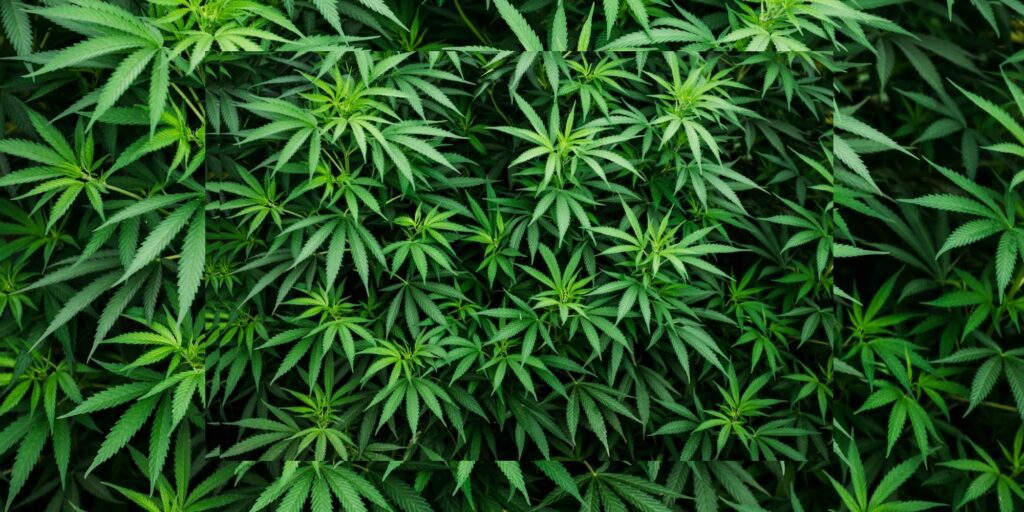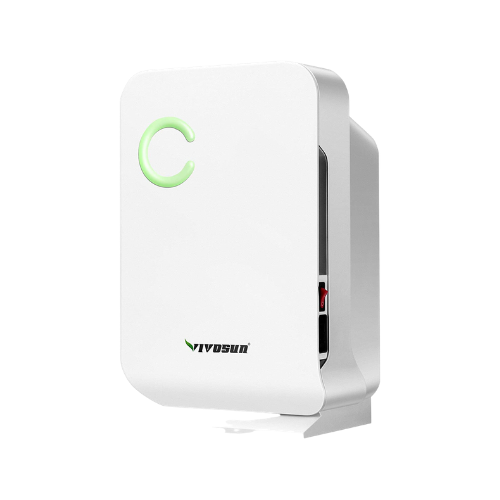Where to place dehumidifier in grow tent?
3 Key Takeaways:
🚀 Dehumidifiers are essential in grow tents to control humidity levels and prevent problems that arise from increased humidity levels, such as mold and mildew growth.
🚀 The placement of the dehumidifier in the grow tent is important for its efficiency and potential.
🚀 Dehumidifiers can be placed directly on the grow tent floor or outside of the tent near the intake fan for small grow tents.
Dehumidifiers are great appliances that ensure the humidity levels in space are under control. Excess levels of moisture in the environment do no one any good. Whether it is the relative humidity inside your living room or in your grow tent; humidity must be under control. High levels of relative humidity have their own set of damaging effects inside a home. For example mold and mildew growth, musty odor, wood rot, and more. When it comes to a cultivation area, like within a grow tent, it is common to easily neglect the importance of dehumidification.
Having a dehumidifier inside the grow tent is essential. High humidity in the environment is not good for a plant either. Having the air evenly circulated and free from moisture can be done by installing a dehumidifier in the grow tent or grow room. When you place a dehumidifier in the grow tent, you prevent a ton of problems that arise from increased humidity levels.
Let us learn more about the answer to the questions about dehumidifier placement in the grow room, and why growers welcome the idea of placing a dehumidifier in the grow home, and how the cultivation benefits when the air quality in the grow room or tent is improved when you place your dehumidifier inside it or near it and more!
Why do you need a dehumidifier in grow tent?
If you are still wondering what is the point of placing a dehumidifier inside a grow tent, here is why.
When plants are being watered, they bring about a shift in the humidity level in the atmosphere. No matter what limited space you have in the grow rooms when you water plants, there is an alteration in the humidity level. The natural process of perspiration and the air that is getting vented into your grow tent from the outside is another factor that will spike the humidity level in the grow room. To have control over this situation growers find the need to place a dehumidifier in the grow tent.
Where should you put a dehumidifier in grow tent?

Pay attention to get the perfect dehumidifier placement in the grow tent during installation. Where you place the dehumidifier is an influential factor when it comes to using the full efficiency or potential of the device. Where you place the dehumidifier will determine the results of the dehumidification process that happens within the grow tent.
There are several criteria that will determine where to place your dehumidifier. For example, size of the room, number of plants in the grow tent, the layout of grow tent, the amount of water used on a daily basis, airflow in the space, ventilation and air movement, climatic conditions, dehumidifiers’ and units’ capacity, type of dehumidifiers used (freestanding, whole house, ducted, suspended), standard temperature and humidity level of the area, etc.
It has been advised that depending on the airflow from the fans, you can try this when you wondering ‘Where to place dehumidifier!’ If the units in the dehumidifiers have a fan with good airflow, you can suspend the dehumidifier above the lights. This is also an answer to fit in even a powerful dehumidifier in grow rooms with limited space.
If the square feet area of the grow room you are dealing with has more space and more than one dehumidifier in it, you much pay some thought into placement. Ensure that the dehumidifiers are evenly spaced. This type of placement and space is important because the dehumidifiers (or space) will create a zone around them. If the humidity level in one zone happens to increase, the unit will have the capacity or responsibility to control or concentrate only on its own zone. Having more than one unit is also beneficial in getting the work done.
However, this might not be a cost-effective solution for all growers, hence not many would support this point of view. The next detail to remember during dehumidifier installation is the air filter in the unit.
“It is recommended that you setup the device within the room in such a way that the filter side should be facing towards the middle of the grow room.”
How do you dehumidify a grow tent?
Dehumidification does not stop with placing a dehumidifier in the right spot alone. There are few other steps to be taken care of. Like:
» Be mindful of how you water your plants. Do not over water.
» Get rid of stagnant water properly.
» Try investing in a powerful whole room dehumidifier to place it inside the tent.
» Keep track of plant density.
» Make more space for air to flow freely. Concentrate on ventilation the space has. Add more fans if necessary.
» You can create air holes.
» Setup an air conditioner for the grow room.
» Insulating and sealing the grow room area will help from excess cold or hot weathers and fluctuations in temperature.
» Take support from absorbent soil and plant defoliation.
» Make the right use of grow equipment.
What happens when you place a dehumidifier inside the grow tent?
You can place a dehumidifier inside the grow room. The device will monitor the humidity level in the air and keep control over the temperature and moisture content in the air. How the setup and installation of dehumidifiers inside a grow room must be will depend on the dehumidifier’s capacity, efficiency, and dimensions of the room, and other factors related to it.
What happens when you place dehumidifier outside the grow tent?
Placing a dehumidifier outside a grow room is not unusual. It might be the best option to ensure dehumidification is carried out properly. Installation of a dehumidifier outside grow rooms is similar to setting up carbon filters outside grow tents. However, this process comes with two options and you can answer to whichever works best for the well-being of your plants. One is the whole room dehumidifier, and the second is the ducted dehumidifier. Consult with your professional if your need to setup a dehumidifier outside the grow room in your home.
How long should a dehumidifier run in a grow tent?
It is recommended that growers run their dehumidifiers 10 to 12 hours per day (or more) in a grow tent. This depends on the unit capacity of the dehumidifier, the number of plants, existing RH in the air, and other criteria. Whether one deals with whole room dehumidifier, ducted or suspended dehumidifier, how many pints of water is removed per day, etc., are also other factors tied to it.
How to choose the size of dehumidifier for grow tent?

Choosing the type size of dehumidifier for your grow room depends on the pints of water removal expected from the device. Hence, it is directly related to the water that has to be removed from the environment. Since plants transpire 97% of their water intake, it means that this is the amount of moisture they will be giving back to the grow room. If you use 20 gallons of water per day for your plants, it means you need a unit that can remove 20 gallons of water per day.
The next factor related to choosing the right size of dehumidifier for the grow room is the BTUs produced. BTU is British Thermal Units. It is a measure of heat that is produced by a piece of equipment. If the unit that you have is going to create too many BTUs, you will be setting up an unhealthy environment for the plants. Excess heat in temperature and moisture that stagnate in any environment is a sign that you will soon be leading towards mold growth, powdery mildew, and other problems from pests. The efficiency of dehumidifiers and the size you require will therefore depend primarily on the mentioned factors.
FAQ Section
1. How to lower humidity in grow tent when humidity is too high?
As aforementioned, there are some tips that will help you in handling high humidity in a grow room.
– Invest in the right size dehumidifier with high efficiency.
– Have adequate ventilation, exhaust fans, air holes, install an air conditioner.
– Clean out the gutters, fix leaks, remove stagnant water.
Making small practices on a daily basis will help to lower humidity when too high.
2. What are the common problems while setting a dehumidifier for grow tent?
One might come across a couple of problems while setting up dehumidifiers for grow tents.
Choosing the right type of dehumidification is a common problem. Making use of a duct system, freestanding dehumidifiers, suspended dehumidifiers to save space, whole room dehumidifiers, etc; can be common confusion and throw a few challenges along the way.
3. How to make dehumidifiers work efficiently?
Ensuring your device works efficiently can be done by:
1. Keeping the air filters clean.
2. Select the right size of dehumidifier based on the square feet it is required to cover.
3. Set the ideal humidity level on the unit correctly.
4. Carry out water tank removal properly.
5. Select the right spot to place the dehumidifier.
4. How many pints dehumidifiers for 10*10 grow room?
The amount of water the plants take in will determine the water transpired. A 10*10 grow room can hold 90 plants. 30 plants will take in 1 gallon of water per day. There are 8 pints in 1 gallon. Hence, for 3 gallons of water per day, your dehumidifier will be required to remove 240 pints of water per day.
With this, we have reached the end o the post. Hope you have an idea of the things that go down with dehumidifier placement within grow tents. Share with us in the comments below which model of dehumidifiers you prefer for grow tents and what are the benefits of their units.
Wrapping Up
Ready to grow your favourite weed?
You can conveniently buy grow tents from Amazon. com. Don’t forget to read the manual to help you with additional tips and images on placing the unit. Contact us for more information on buying dehumidifiers, cleaning, and maintenance.

About The Author
Olivia — a self-confessed air quality addict — is a home climate enthusiast, fresh air advocate, and someone with deep personal experience and knowledge about mold extermination. Her work was mentioned in countless notable humidity publications. Previously she was an editor at Mold Remediation.